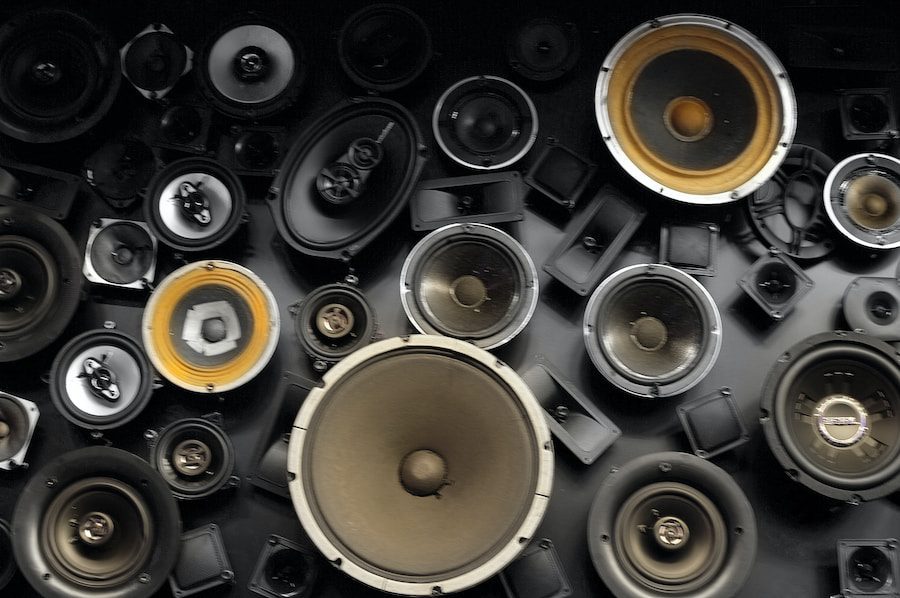Coaxial speakers have long been popular for car audio enthusiasts and home audio systems. These speakers, also known as coax speakers, offer a unique design that combines a woofer and a tweeter in a single unit. This design helps to deliver clear and balanced sound across a wide range of frequencies, making them an attractive option for various audio applications.
This article provides a comprehensive guide for those seeking to upgrade their sound system or learn about the benefits of coaxial speakers. From understanding the basics of coaxial speaker construction to weighing the pros and cons, readers will gain valuable insight into this popular audio solution. With a solid understanding of coaxial speakers, individuals can make well-informed decisions when selecting the ideal speakers for their specific needs.
Table of Contents
- Understanding Coaxial Speakers
- Benefits of Coaxial Speakers
- Selecting the Right Coaxial Speakers
- Installation Tips and Guidelines
- Maintenance and Care
- Conclusion

Understanding Coaxial Speakers
Coaxial speakers are a popular choice for car audio systems and home theater setups, known for their compact design and good sound quality. This section will delve into the components and design of coaxial speakers and their different types.
Components and Design
Coaxial or full-range speakers consist of a woofer and tweeter combined into a single unit. The woofer produces low-frequency sound waves, while the tweeter handles high-frequency sound waves.
In a coaxial speaker’s design, the tweeter is typically mounted in the center of the woofer cone. This arrangement allows for a single-point source of sound, which results in improved sound imaging and a more balanced audio output. Additionally, the compact design increases installation and placement versatility, making them a popular choice in various audio applications.
Coaxial speakers have a few key components:
- Woofer cone: The large diaphragm made of materials such as paper, plastic, or metal responsible for generating low-frequency sound waves.
- Tweeter: The small high-frequency driver placed in the center of the woofer cone, handling high-frequency sound waves.
- Crossover: An electronic circuit that filters and distributes appropriate frequencies to each driver, ensuring optimal performance.
- Speaker frame: A sturdy structure that houses and supports all components, providing stability and durability.
Types of Coaxial Speakers
Coaxial speakers come in various types, suited to different audio applications and listener preferences. The most common types are 2-way and 3-way coaxial speakers.
2-way coaxial speakers: The most standard type, featuring a woofer and a tweeter. This design offers a balanced audio output covering a wide frequency range, from low to high. 2-way coaxial speakers are ideal for general audio applications and environments where space is constrained.
3-way coaxial speakers: These speakers feature an additional midrange driver, offering improved performance in mid-frequency audio reproduction. This enhances audio clarity and detail, making it ideal for applications where higher audio fidelity is desired. 3-way coaxial speakers are suitable for home theater systems and car audio setups where audio quality is a priority.
In addition to these common types, some manufacturers offer specialized coaxial speakers with additional components for specific applications, such as high-performance car audio systems. The choice of coaxial speakers largely depends on the listener’s preferences and the intended use.
Benefits of Coaxial Speakers
Coaxial speakers offer several advantages, making them a popular choice for many car audio enthusiasts. In this section, we’ll discuss the benefits of coaxial speakers, focusing specifically on the ease of installation, cost-effectiveness, and space-saving characteristics.
Ease of Installation
One of the main benefits of coaxial speakers is their ease of installation. Compared to component speakers, which require separate installations for the woofer and tweeter, coaxial speakers merge these components into a single unit. This simplifies the installation process by eliminating the need for additional wiring and crossover networks.
Additionally, coaxial speakers are often designed to fit into the factory speaker locations in most vehicles, making them an ideal choice for those looking to upgrade their factory audio system with minimal modifications.
Cost-Effective
Coaxial speakers are often more affordable than their component counterparts. As the components are combined into one unit, the manufacturing process is streamlined, reducing production costs. These savings are then passed on to the consumer, resulting in coaxial speakers offering a more budget-friendly option for those looking to enhance their car audio without breaking the bank.
Space-Saving
Another advantage of coaxial speakers is their space-saving design. Since the woofer and tweeter are integrated into one unit, they occupy less space than separate component speakers. This makes coaxial speakers attractive for smaller vehicles or those wishing to maintain a clean, uncluttered look in their car’s interior.
In addition, the absence of external crossovers further contributes to their space-saving qualities, as there is no need to find a suitable location to mount and store these additional components.
Selecting the Right Coaxial Speakers
Compatibility and Specifications
When choosing coaxial speakers, ensure they are compatible with your car’s audio system. Check the speaker size, mounting depth, and power handling capabilities of the speakers against your system’s requirements. Remember that different speakers produce varying sound quality levels, and it’s essential to consider factors such as frequency range, sensitivity, and impedance.
Some points to consider:
- Speaker size: Measure your car’s mounting locations to ensure the speakers will fit.
- Mounting depth: Check the speaker’s depth to ensure it won’t obstruct any car components behind it.
- Power handling: Ensure the speakers can handle a power range similar to your car’s audio system.
- Frequency range: A wider frequency range ensures a more detailed sound reproduction.
- Sensitivity: A higher sensitivity rating indicates better-converting power to sound efficiency.
- Impedance: Ensure the speakers match your audio system’s impedance for optimal performance.
Top Brands and Models
Investing in well-known brands usually guarantees better audio quality and durability. Here are some popular brands and their top models:
| Brand | Model |
|---|---|
| JBL | Club 6520 |
| Pioneer | TS-A1670F |
| Kenwood | KFC-1696PS |
| Alpine | S-S65C |
| Rockford Fosgate | R165X3 |
Budget Considerations
Coaxial speakers come in a wide range of prices, so it’s crucial to set a budget before purchasing. Affordable options may provide suitable sound quality for casual listeners, while higher-priced speakers may offer more advanced features and better overall performance.
Determine your priorities, such as sound quality, brand reputation, or specific features, and use those factors to guide your decision. Remember that the installation process may require additional materials and labor costs if you’re uncomfortable with DIY projects.
Installation Tips and Guidelines
Tools and Materials
Before starting the installation of coaxial speakers, gather the necessary tools and materials:
- Screwdriver
- Wire stripper
- Wire cutter
- Drill (optional)
- Speaker harness adapter (specific to your vehicle)
- Electrical tape or heat shrink tubing
Step-by-Step Process
Follow these steps to install coaxial speakers in a vehicle:
- Disconnect the vehicle’s battery to avoid short circuits.
- Remove the door panel or speaker grille to access the existing speaker. Refer to the vehicle’s manual for specific instructions.
- Unplug the speaker wires from the old speaker and remove them from the mounting location.
- Mount the new coaxial speaker using the factory screw holes or drilling new ones, if necessary. Make sure it fits securely and is flush with the surface.
- Connect the speaker wires to the new coaxial speaker. Use a wire stripper to expose the ends of the wires and attach them to the terminals. Secure the connections with electrical tape or heat shrink tubing.
- If applicable, plug the speaker harness adapter into the vehicle’s wiring harness.
- Test the newly installed speaker to ensure proper function before reassembling the door panel or speaker grille.
- Repeat this process for each coaxial speaker that needs to be installed.
Troubleshooting
If problems arise during or after the installation, here are some common issues and solutions:
| Issue | Solution |
|---|---|
| No sound from the speaker | Check for a loose or damaged speaker cone. Ensure the connections are secure and properly insulated |
| Distorted sound | Check for a loose or damaged speaker cone. Ensure the connections are secure and properly insulated. |
| Intermittent sound | Inspect the speaker wires for damage or shorts. Confirm that the speaker is securely mounted. |
Maintenance and Care
Proper maintenance and care are essential for ensuring the longevity and performance of coaxial speakers. This section discusses the key aspects of maintenance, including cleaning, periodic checks, and tips for extending your speakers’ life.
Cleaning
Keeping your coaxial speakers clean is an important aspect of maintenance. Dust and debris on the speaker cones can affect audio quality and damage the components over time. To clean your speakers, follow these steps:
- Turn off the audio system and unplug the speakers if possible.
- Use a soft, dry cloth to gently wipe any visible dust from the speaker cones and surrounding surfaces.
- For more stubborn dirt, use a small brush (such as a paintbrush) to carefully remove debris from the speaker cone and other small spaces.
- Avoid using water, solvents, or cleaning solutions, as these can cause damage to the speaker components.
Periodic Checks
Regularly inspecting your coaxial speakers for signs of wear, damage, or other issues can help prevent potential problems before they become serious. Conduct periodic checks by following these guidelines:
- Inspect the speaker cones for visible tears, punctures, or excessive wear.
- Check the speaker wires and connections for damage, corrosion, or loose connections.
- Listen for any unusual sounds, such as distortion, buzzing, or rattling, that could indicate an issue with the speakers.
- Address any issues by repairing or replacing the affected components as needed.
Longevity Tips
To extend the life of your coaxial speakers and maintain optimal performance, consider these longevity tips:
- Avoid overdriving the speakers by staying within the recommended power and volume range specified by the manufacturer.
- Protect your speakers from extreme temperatures, moisture, and direct sunlight, which can cause damage over time.
- Ensure your speakers are properly mounted and secure to prevent vibrations and movement that could affect performance.
Conclusion
Coaxial speakers are an efficient and easy-to-install option for upgrading a car’s audio system. These speakers combine the woofer and tweeter into a single unit, resulting in a more compact design, which makes installation simpler for the average user.
Some key advantages of coaxial speakers include their cost-effectiveness, space-saving design, and ease of installation. Additionally, they offer a balanced sound, making them suitable for most music genres and casual listeners.
When selecting the best coaxial speakers for one’s needs, one should consider factors such as speaker size, power handling, sensitivity, frequency response, and materials used in the speaker’s construction. It is important to note that while coaxial speakers provide a satisfactory sound quality for many users, audiophiles and enthusiasts may prefer component speakers for a more immersive listening experience.
In conclusion, coaxial speakers are a practical choice for those looking to improve their car’s audio performance without breaking the bank or going through a complex installation process. Though they may not be the ideal choice for everyone, their many benefits make them an attractive option for many individuals.
- Review of the ALABS IRON MINI-WL: A Powerhouse Wireless Microphone - October 4, 2023
- What is a Saturator in Music Production: A Brief Explanation - May 11, 2023
- What Are Rotary DJ Mixers? An Overview - May 11, 2023
SoundStudiomagic.com is a participant in the Amazon Services LLC Associates Program, an affiliate advertising program designed to provide a means for sites to earn advertising fees by advertising and linking to Amazon.com. We also participate in other affiliate programs which compensate us for referring traffic.

